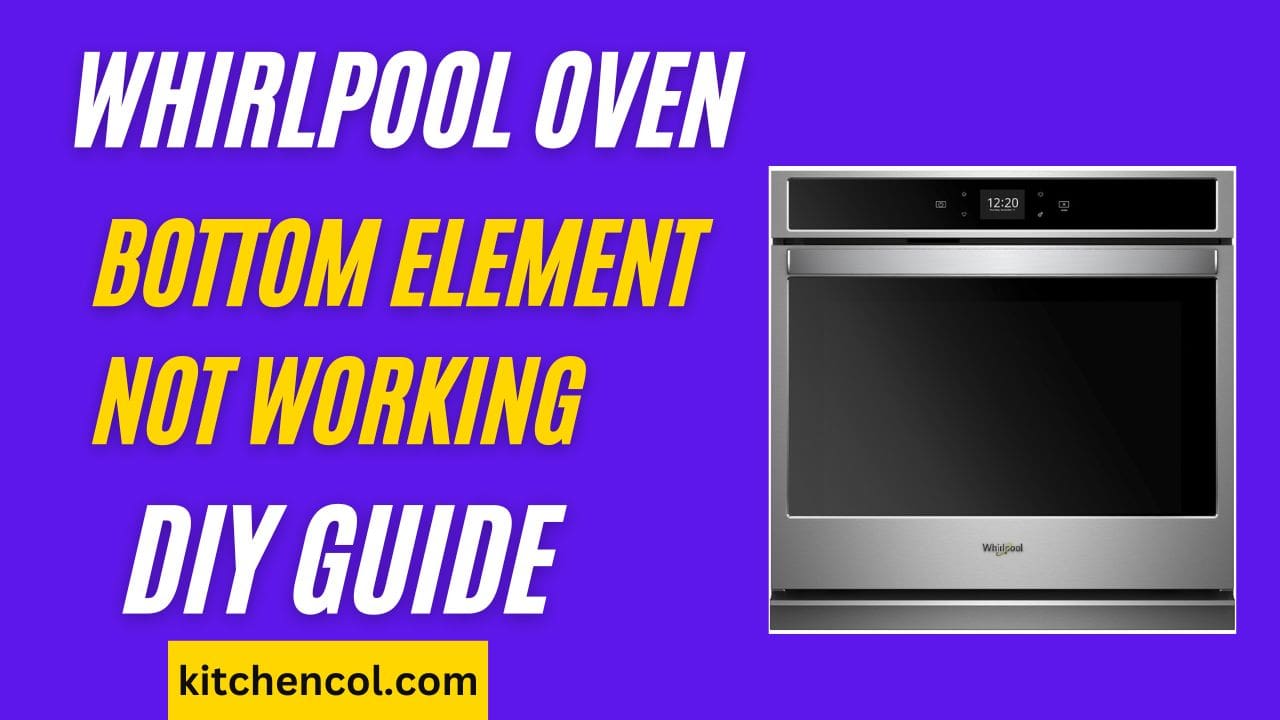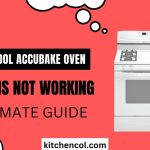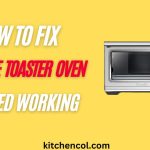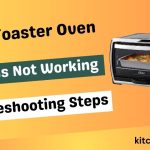Imagine this: you’re all set to prepare a delicious meal in your trusty Whirlpool oven, but as you eagerly anticipate the aroma of your culinary creation, you notice something’s amiss. The whirlpool oven bottom heating element isn’t working. Before you give in to despair or start contemplating takeout, fear not!
In this troubleshooting guide, we’ll walk you through the steps to diagnose and fix the issue when your Whirlpool oven’s bottom heating element refuses to cooperate. Whether you’re a seasoned DIY enthusiast or just someone trying to avoid costly repairs, this guide has got you covered. Let’s dive in and get that oven back in action!
Understanding the Oven’s Heating Elements
In the world of culinary delights, an oven is a kitchen superstar, and at its heart lie the heating elements. These essential components are the unsung heroes behind perfectly baked cookies, golden-brown roasts, and mouthwatering casseroles.
In your Whirlpool oven, there are two heating elements: the upper and lower. In this section, we’ll delve into the crucial roles these elements play and why the bottom one, in particular, is essential for your cooking success.
The Dynamic Duo: Upper and Lower Heating Elements
Think of your oven’s heating elements as a dynamic duo working in harmony to cook your meals to perfection. They are to an electric oven what fire is to a gas stove, the fundamental source of heat.
The Upper Heating Element: This element is located on the oven’s ceiling. Its primary job is to provide direct heat from above, which is ideal for broiling, browning the tops of casseroles, and giving your pizza that irresistible bubbling cheese. When you select the “broil” function, the upper element is your culinary partner in crime.

The Lower Heating Element: Our star of the show today, the bottom heating element, is situated at the oven’s base. Its role is equally crucial but somewhat different. This element’s purpose is to radiate heat from the bottom up, creating a stable and even temperature throughout the oven. It’s responsible for baking your cakes evenly, crisping the bottom of your pies, and ensuring your roasted chicken cooks thoroughly. In essence, it’s the unsung hero that completes your baked creations.
The Importance of a Properly Functioning Bottom Element
Now that we’ve established the critical functions of the lower heating element, let’s emphasize why it’s vital for your cooking success:
- Even Baking: A well-functioning bottom element ensures uniform heat distribution within your oven. This means no more half-baked cookies or unevenly cooked casseroles.
- Consistency: Whether you’re baking, roasting, or broiling, consistency in temperature is key. The bottom element helps maintain a stable oven temperature, ensuring your dishes turn out as expected.
- Crispy Bottoms: For dishes like pizza and quiches, a working bottom element guarantees that your crusts and bases are perfectly crisp, not soggy.
- Cooking Versatility: From delicate pastries to hearty roasts, the bottom element’s even heat allows you to explore a wide range of culinary creations with confidence.
In the next sections, we’ll delve into the nitty-gritty of troubleshooting when this indispensable element goes on strike. But before we get there, let’s make sure we’re doing it safely.
In the upcoming section on safety precautions, we’ll cover essential tips to keep you and your kitchen out of harm’s way while diagnosing and fixing your Whirlpool oven’s bottom heating element issues.
Safety Precautions
When dealing with any electrical appliance, especially one as powerful as an oven, safety should be your top priority. Before attempting any troubleshooting or repairs on your Whirlpool oven’s bottom heating element, here are some essential safety precautions to keep in mind:
- Power Off: Always start by disconnecting the oven from its power source. This typically involves unplugging it or turning off the circuit breaker dedicated to the oven. Confirm that there is no electricity running to the appliance before proceeding.
- Wait for Cool Down: Your oven can retain heat even after it’s turned off. Give it sufficient time to cool down before attempting any inspection or repairs to avoid burns.
- Protective Gear: Wear appropriate safety gear, such as heat-resistant gloves and safety goggles, when handling the oven’s heating elements and interior components. These items will protect you from burns and potential debris.
- Proper Tools: Use the proper equipment for the task. Ensure your tools are in good condition and suitable for electrical work. Avoid using damaged or inadequate tools.
- Avoid Water: Never use water to clean or extinguish any electrical fires inside the oven. Water and electricity don’t mix and can result in electrical shock or further damage.
- Ventilation: Ensure proper ventilation in your kitchen while working on your oven. This helps dissipate any fumes or odors that may be released during troubleshooting.
- Consult Manuals: Refer to your Whirlpool oven’s user manual for specific safety instructions and troubleshooting guidelines. Manufacturers often provide valuable information about their appliances.
- Know Your Limits: If you’re unsure about any aspect of troubleshooting or repair, it’s better to seek professional assistance. Attempting complex repairs without the necessary expertise can be dangerous and may void warranties.
By adhering to these safety precautions, you’ll create a secure environment for diagnosing and resolving issues with your Whirlpool oven’s bottom heating element. Now, with safety in mind, let’s move on to identifying potential causes and solutions for a non-functioning bottom element in your oven.
Possible Causes of a Non-Functioning Bottom Element
When your Whirlpool oven’s bottom heating element stops working, it can disrupt your cooking plans and leave you wondering what went wrong. To get to the bottom of this issue (pun intended), let’s explore some common culprits:
Electrical Issues:
- Tripped Circuit Breaker or Blown Fuse: Start with the basics. Check your home’s electrical panel for a tripped circuit breaker or a blown fuse that may be cutting off power to the oven.
- Faulty Wiring or Loose Connections: Inspect the oven’s wiring for any visible damage or loose connections that could disrupt the flow of electricity to the bottom element.
Element Problems:
- Burned-out or Damaged Bottom Heating Element: Over time, heating elements can wear out or develop defects, leading to their malfunction. Look for visible signs of damage, like visible breaks or burn marks.
- Element Not Receiving Power: Sometimes, the element may be intact, but it might not be receiving power due to a malfunction in the control system or wiring.
Control Panel Issues:
- Malfunctioning Oven Control Board: The control board regulates the power supply to the heating elements. If it’s faulty, it can prevent the bottom element from heating up correctly.
- Temperature Sensor Problems: A malfunctioning temperature sensor can mislead the oven into thinking it’s at the desired temperature when it’s not, affecting the heating elements’ performance.
In the following sections, we will walk you through a step-by-step troubleshooting guide to help you identify and address these issues effectively.
Whether it’s a simple fix like resetting a circuit breaker or a more complex problem requiring a replacement part, understanding these potential causes is the first step in reviving your Whirlpool oven’s bottom heating element.
Step-by-Step Troubleshooting Guide
Now that we’ve covered the possible causes of a non-functioning bottom heating element in your Whirlpool oven, it’s time to roll up your sleeves and get to work. This step-by-step troubleshooting guide will help you systematically identify and resolve the issue:
Checking for Power Supply Issues:
- Inspect the Circuit Breaker and Fuses: Begin by visiting your home’s electrical panel and look for a tripped circuit breaker or blown fuse dedicated to the oven. Replace the fuse if one is discovered or reset the breaker.
- Testing the Electrical Outlet: Ensure the electrical outlet where the oven is plugged in is functioning correctly. Plug in another appliance or use a voltage tester to verify if there’s power.
Inspecting the Heating Element:
- Identifying Signs of Damage: Visually examine the bottom heating element for any visible damage, such as breaks or burn marks. If damaged, it needs replacement.
- Replacing a Faulty Element: If you’ve confirmed a damaged element, order a replacement part compatible with your oven model and follow the manufacturer’s instructions for installation.
Testing the Oven Control Board:
- Verifying Functionality: If the heating element and power supply are fine, the issue may lie with the oven control board. Consult your oven’s user manual or manufacturer’s instructions to test its functionality or consult a professional for diagnosis.
Checking the Temperature Sensor:
- Testing and Replacing a Faulty Sensor: If you suspect the temperature sensor is the problem, use a multimeter to test its resistance. If it’s out of spec, consider replacing it with a new one.
Remember, safety first. Always ensure the oven is disconnected from the power source before attempting any inspection or repairs.
If at any point you’re uncertain or uncomfortable with the troubleshooting process, don’t hesitate to seek professional assistance. In the next section, we’ll explore when DIY repairs are appropriate and when it’s best to call in the experts for help.
DIY Repairs vs. Professional Help
Deciding whether to tackle the repair of your Whirlpool oven’s bottom heating element on your own or seek professional assistance hinges on several factors:
DIY Repairs:
- Electrical Competence: If you have experience with electrical systems and feel confident identifying and fixing issues, DIY repairs may be a cost-effective option for you.
- Simple Fixes: Some issues, like resetting a circuit breaker or replacing a visibly damaged heating element, are straightforward and can be handled by most homeowners.
Professional Help:
- Complex Problems: If you’re uncertain about the cause of the issue or it involves intricate components like the control board or temperature sensor, it’s advisable to consult a professional technician.
- Safety Concerns: When safety is a concern or if you’re uncomfortable working with electricity, calling a certified technician ensures a secure repair process.
- Warranty Preservation: Seeking professional assistance can help maintain your oven’s warranty, as DIY repairs may void it.
Ultimately, the decision depends on your comfort level, experience, and the nature of the problem. If in doubt, err on the side of caution and consult a qualified technician to avoid potential hazards and ensure a successful repair.
Preventive Maintenance Tips
Keeping your Whirlpool oven in top working condition not only ensures delicious meals but also extends its lifespan. Here are some preventive maintenance tips to help you achieve both:
- Regular Cleaning: Clean the oven’s interior, racks, and heating elements regularly. Spills and food debris can accumulate and affect cooking performance.
- Oven Door Seal Check: Ensure the oven door seal (gasket) is intact and properly sealed. A damaged seal can lead to heat loss and inefficient cooking.
- Avoiding Excessive Spills: Place a baking sheet or aluminum foil on the oven rack beneath dishes that may spill or bubble over. This helps keep the oven clean and prevents potential damage to the heating elements.
- Calibration Check: Periodically check your oven’s temperature calibration. You can use an oven thermometer to verify that the displayed temperature matches the actual temperature inside the oven.
- Ventilation: Keep the oven’s ventilation system clean and unobstructed to maintain proper airflow and prevent overheating.
- Safe Cooking Practices: Avoid slamming the oven door, which can damage the heating elements or control panel. Use appropriate cookware and utensils to prevent scratches and damage.
- Scheduled Inspections: Consider scheduling periodic professional inspections to identify and address any potential issues before they become major problems.
By following these preventive maintenance tips, you can ensure your Whirlpool oven remains in excellent working condition, providing reliable and consistent cooking performance for many meals to come.
Also Read: Ninja Creami Blade Falls Off-A Step BY Step Guide
Conclusion
A malfunctioning bottom heating element in your Whirlpool oven can be a kitchen conundrum, but armed with the knowledge and guidance provided in this troubleshooting guide, you’re well-equipped to tackle the issue.
We’ve covered the importance of the oven’s heating elements, safety precautions to follow, possible causes of a non-functioning bottom element, and a step-by-step troubleshooting process.
Remember that safety should always be your priority when dealing with electrical appliances. Take the necessary precautions, and don’t hesitate to seek professional help if you’re uncertain or uncomfortable with any aspect of the repair process.
Whether you’re a seasoned DIY enthusiast or prefer to leave it to the experts, addressing the problem promptly is key to ensuring your oven continues to serve up delicious meals with precision.
With the right approach, you can have your Whirlpool oven back in action, baking, roasting, and broiling to perfection, all while enjoying the peace of mind that comes with a well-maintained appliance. Happy cooking!

My name is Manan Bukhari and I am an expert in reviewing kitchen products for years. I have a passion for testing multiple gadgets especially related to home & kitchen. I love to spend my free time in resolving issues if I face some in any of my daily use things. I have fixed multiple gadgets of my home on my own without any assistance and that thing gave me confidence to make a blog on troubleshooting of items that are for daily use to assist you folks. Even my wife praises me for having such talent. I always explore new machines on my own because this thing fascinates me.



